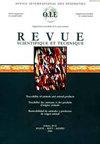Current and future trade in livestock products.
IF 1.9
4区 农林科学
Q2 VETERINARY SCIENCES
Revue Scientifique et Technique-Office International Des Epizooties
Pub Date : 2021-08-01
DOI:10.20506/rst.40.2.3232
引用次数: 3
Abstract
Rising per capita consumption, economic growth, and urbanisation, particularly in developing countries, have been driving an increased global demand for food. These changing socio-economic trends, which have greatly influenced changes in dietary patterns globally and, more specifically, have increased consumption of livestock products in developing countries, are expected to endure and to place new pressures on livestock-sector infrastructure and the delivery of veterinary services. This paper summarises current trade in meat and presents plausible projections for the future. It highlights the impact of animal disease on trade and considers the effect of ongoing disease outbreaks, particularly the outbreaks of African swine fever and COVID-19, on current and future trade dynamics. The authors analysed published statistics on the demand for, and international trade in, livestock products at national and regional levels and made projections of the same up to 2050, generated from an integrated model of the global agricultural and food system. The resulting analyses identified patterns of trade consistent with growing populations, increasing incomes and changing diets in developing countries. The analyses also pointed to slow expansion of livestock production, and the impacts of countries' disease status on livestock trade. For most of the livestock products analysed, economic model projections indicate increased consolidation of production and exports among a few countries. Marked increases in the trade in livestock products suggest a changing role for Veterinary Services in facilitating trade and extension in the years to come.畜产品的当前和未来贸易。
人均消费增长、经济增长和城市化,特别是在发展中国家,推动了全球粮食需求的增加。这些不断变化的社会经济趋势极大地影响了全球饮食模式的变化,更具体地说,增加了发展中国家牲畜产品的消费,预计这些趋势将持续下去,并对畜牧业基础设施和兽医服务的提供造成新的压力。本文总结了当前的肉类贸易,并对未来提出了合理的预测。它强调了动物疾病对贸易的影响,并考虑了正在发生的疾病疫情,特别是非洲猪瘟和COVID-19疫情对当前和未来贸易动态的影响。这组作者分析了已公布的国家和区域一级畜产品需求和国际贸易的统计数据,并根据全球农业和粮食系统的综合模型对到2050年的畜产品需求和国际贸易进行了预测。由此产生的分析确定了与发展中国家人口增长、收入增加和饮食变化相一致的贸易模式。分析还指出了畜牧生产扩张缓慢的问题,以及各国疾病状况对畜牧贸易的影响。对于所分析的大多数畜牧产品,经济模型预测表明,少数国家的生产和出口整合程度有所提高。畜产品贸易的显著增长表明,未来几年兽医服务部门在促进贸易和推广方面的作用将发生变化。
本文章由计算机程序翻译,如有差异,请以英文原文为准。
求助全文
约1分钟内获得全文
求助全文
来源期刊
CiteScore
2.40
自引率
0.00%
发文量
22
审稿时长
>24 weeks
期刊介绍:
The Scientific and Technical Review is a periodical publication containing scientific information that is updated constantly. The Review plays a significant role in fulfilling some of the priority functions of the OIE. This peer-reviewed journal contains in-depth studies devoted to current scientific and technical developments in animal health and veterinary public health worldwide, food safety and animal welfare. The Review benefits from the advice of an Advisory Editorial Board and a Scientific and Technical Committee composed of top scientists from across the globe.

 求助内容:
求助内容: 应助结果提醒方式:
应助结果提醒方式:


